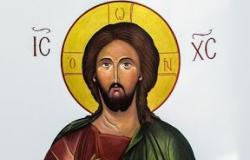What about Caryl Chessman, an inmate sentenced to death in 1948, who fought for twelve years on death row to save his life. During his detention Chessman wrote four books, as well as preparing appeals, letters and studying law because he had decided to defend himself. Thus “Cell 2455 Death Row” is a moving book for its precise, sincere reconstruction of a life of hate and crimes.
He doesn’t want the reader’s pain, nor does he want to justify himself for what he has done in his life.
At the same time, the author condemns the judicial system, which does not try to understand why a boy becomes a criminal, nor to help him, but condemns him and sends him among other criminals and criminals, who transform him into a criminal of low league.
This is Chessman’s true thought that emerges when reading “Cell 2455 Death Row”, the most important of the four novels written in prison, which clearly highlights the anguished conditions of a man condemned to death.
After spending several years in a reformatory, at the end of 1940 a mysterious criminal threw the city of Los Angeles into dismay and terror. The man acted at night, attacking young couples who were hiding in cars in suburban areas, robbing them and forcing the girls to follow him, often using violence. He used a police uniform and a torch that projected a red light, reassuring because it was associated with that of the police.
And so the legend of the “red light bandit” was born, who committed many crimes before the Los Angeles police managed to capture him. Or rather, to capture a young drifter who, based on some uncertain testimonies, the police assured was the culprit: Caryl Chessman.
Caryl was arrested together with a friend of his, while they were waiting for a third friend, the alleged owner of the car. In the car in which the two were sitting at the time of the arrest, new women’s clothes, a red flashing light and a gun were found. The car was a new, dark-colored Ford and was not a convertible as witnesses said. Most importantly, Caryl did not match the physical description given of the robber, yet he was identified by one of the victims.
Tried and transferred to San Quentin prison, in the special section of the prison known as “death row”. Caryl was sentenced to death despite the absence of murders due to the “Lindbergh law”, approved after the killing of the two-year-old Lindbergh, a law that punished with capital punishment. In his case he would have been sentenced to a simple prison sentence, but he refused, declaring himself innocent.
Caryl managed to obtain a long series of reprieves, with appeals made to the governor and the Supreme Court proving his innocence. On May 2, 1960 he was executed just at the moment when yet another postponement had arrived.
This book spread worldwide, becoming a weapon in the hands of capital punishment abolitionists. It is an invitation to reflect on the death penalty.
When you finish reading the book, the only possible question you ask yourself is: Caryl the gas chamber? He may not have been guilty, not because he said so, but because his modus operandi was not ascertained, so he would have been executed unjustly. And even if he had been, he hadn’t killed anyone, and therefore he didn’t deserve the gas chamber anyway.
Until the end of his days he always affirmed his innocence, so much so that he told one of the guards, a few moments before the execution, to report these words: “I am not the bandit of the red light”.
Tags: anguish condemned man SetteNews





